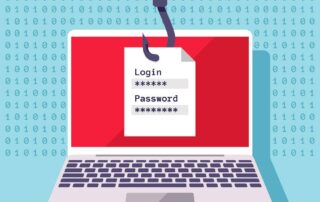Employers are anxious to get people back in the office, which of course, comes with never-before-seen stumbling blocks. So, can you have your staff return to the office? Can we decrease Zoom fatigue and focus on building meaningful work relationships. But all those leases and office supplies mean many manager are saying returning to the office is killing my budget.
B.C., or before COVID, about 20% of the U.S. workforce worked remotely. Tthat percentage reached 71%, and unsurprisingly, not everyone wants to stay at home. Remember when you could come into work, focus on your job for eight hours and then go home to your kids? For everyone ready to get back to fewer disruptions and trips to the break room instead of the kitchen, we have a clear checklist for employers to make their office safe and welcoming and answers to your top questions. But now we find out returning to the office is killing my budget for many managers.
What Will It Be Like Going Back to the Office, whenever that is. Employers are anxious to get people back in the office, which of course, comes with never-before-seen stumbling blocks such as returning to the office is killing my budget. So, can you have your staff return to the office? Can we decrease Zoom fatigue and focus on building meaningful work relationships?
As with the shut-downs, everyone’s experience will vary. But, every office should have a plan for bringing in staff. That plan should address location, industry, and company-specific needs so all staff members can easily see how their experience might vary from what they’ve seen online or heard from friends.
Some offices are acting as though nothing happened, as if 2020 doesn’t exist. Your office might be exactly as you left it with a little more dust, and your company or state may not require an avalanche of new rules and systems.
Or, your office may go the other way. There could be endless streams of post-COVID safety information and rules on how to walk through the cubicle aisles. Again, it comes back to location, industry, and company needs.
What about all that lost time? Can we socialize with our co-workers? Returning to the office won’t involve everyone gathering around the water cooler or full department meetings held in the green room. Best practices for day-to-day interactions will fall to H.R. or management. Even then, the rules and guidelines will change as we all figure out what works and what doesn’t.
Reuters has created a series of mini-games where you navigate through revamped office spaces with objectives such as “avoid close contacts” and “mind the signs directing traffic flow.” These games may seem like a bit much, and that’s the point. Reuters is showing what it could be like when we return to in-person workspaces. There will be a lot of focus on health safety and sanitation. Will your office be as rigorous as these mini-games? Probably not, but the level of care and mindfulness are reasonable assumptions.
Human resources are the ones setting the stage for reopening offices. They need to evaluate new regulations, OSHA best practices, and more to build a functional, efficient, and safe work environment.

Getting back to the office won’t be easy. Creating an environment that makes it easy to follow new rules might not be easy either.
Documents and Visual Support
Lean, Six Sigma and other well-known management methods heavily emphasize visual references and reminders with good reason. They work. What visual support can you offer your staff as they return to the office?
Signs and documents are mission-critical for reopening the workplace. They’re the square one for establishing rules and expectations. The trouble is ensuring effectiveness without diluting the message.
To create effective signs and documents covering work rules:
- Keep messages short.
- Start rules with words that connect, such as: we, you, and everyone.
- Avoid using words that disconnect or limit, such as: no, stop, and don’t.
- Use a lot of white space.
- Rely on plain language – don’t leave room for interpretation.
- Ensure that documents are easily available (intranet resource, newsletters, etc.).
Consider investing in long-term wall signs for distancing and sanitation expectations.
Tech Tools
Keep the tools you’ve used over the last year. Yes, companies have spent much more on communication software than they ever thought possible, but it’s useful. Remember red-tagging the conference rooms? Even with staff in the building, you’ll want to keep meetings virtual or small.
There are other tech habits and tools you want to keep from the quarantine days too. Remind employees that using the cloud and digital teams tools is best and to avoid saving anything onto their desktop.
Health and Safety Measures
COVID-19 raised awareness of how generally gross humans are, even when on our best behavior. Do you need a policy for sneezing? No. You do need some health and safety measures that will look similar to what you’ve seen in grocery stores and open retail shops.
Here are commonplace and reasonable health and safety measures to implement in workplaces:
- Keep sick, or potentially sick, staff at home without the guilt-trips or suspicions.
- Wash hands thoroughly and regularly.
- Keep your work tools and equipment to yourself.
- Housekeeping is an ongoing process. Always wipe down surfaces when leaving an area.
- Follow basic etiquette for sneezing, coughing, etc.
- Stay contactless as often as possible. Avoid unnecessarily touching surfaces or workspaces.
- Be mindful of office congestion, avoid lines, and adhere to staggered schedules.
One health safety suggestion has many people excited… the prospect of a bigger desk or a neighbor less setup. Offices are leaving every other cubicle empty or outright giving employees larger desks. It’s a benefit that benefits everyone!
On a final note, you just can’t beat convenience when it comes to habit-forming. Here are some ways you can make your new health and safety measures convenient:
- Use sensor technology to measure temperatures and building capacity.
- Dedicate doorways as exit or entrance-use to control congestion.
- Stagger employee arrival times and lunch periods.
- Consider improvements to HVAC systems if possible.
- Implement motion-detection doors wherever reasonable.
- Opt for motion-activated faucets and sanitizing stations.
Some companies are lightyears ahead and using coffee machines that scan Q.R. codes to brew rather than pressing a button!
Is Returning to the office is killing my Budget?
Before you return to the office, ensure that you go through each item on this checklist:
- Evaluate new regulations and legal requirements for your location and industry.
- Create lists for possible new compliance initiatives and legal risks.
- Work with the general counsel to create new policies for health safety standards, cleaning and disinfection protocol, PPE use, and all possible new risks.
- Update existing policies to match new compliance expectations.
- Assess the needs of staff who have special health needs.
- This may require updating job descriptions and policies that cover special accommodations and remote work opportunities.
- Create a plan for physically updating the workplace.
- Implementing the 6-foot office
- Distributing access points
- Establishing temperature screening areas and sanitizing stations.
- Develop a communication plan and platform.
- Select your point people.
- Create a single platform or support option for employees to access information about benefits, sick-leave, and more.
Corban OneSource benefits administration support takes the drain off of in-house H.R. staff and supports your employees. Employees can always call with questions and receive clear answers and we reduce the fear that returning to the office is killing my budget.
- Notify staff with a return-to-work letter and resources. Provide all updated policies and clear instructions on what to expect and where to go when they arrive.
- Give training on new policies and procedures.
Asking people to return to the office isn’t simple. The idea that people can walk in through the doors and take a seat is long gone. We can do now to plan and prepare so the employees get the least jarring experience possible. Have answers ready, keep your plans intact, and know that complaints and requests will soon flood into H.R. inboxes.
Hot Topic Questions for Employers Bringing Their Staff Back to Work
These questions aren’t just coming from employees skeptical about returning to the office. Employers want answers too. SHRM and other top authorities in the H.R. space has struggled in the last few months to get clear answers from local, state, and federal officials. We have some answers, but like everything else relating to COVID-19, everything is subject to change. Annoying, isn’t it?
Is There Increased Liability in Having Staff Return to the Office?
Without a doubt, there is an increased liability because, for nearly a year, employers have had very low risks. Now that people are in the office, we go back to worrying about people tripping over cords. That’s not the liability that most companies have in mind right now. All of which begs the question is returning to the office is killing my budget?
It only took a few months for the most litigious to realize that you can sue your employer. It’s pretty alarming. It falls under “negligence,” which means that the employee is responsible for proving the employer was negligent.
The worst version goes something like this: an employee calls their boss reporting a fever and feeling achy. The boss says it’s probably just a cold and to come in anyway. The employee reframes and says that it’s pretty bad, and he can go to urgent care for a note if the company needs it. The boss replies, “We’re short-staffed. If you don’t show up today, don’t bother coming in tomorrow.” For the record, those are real words I heard years ago for what ended up being Strep Throat.
Here’s what you can do to reduce the likelihood of facing a negligence lawsuit:
- Take people on their word when they call out sick.
- Send people home when they show signs of illness or report close contact with COVID.
- Provide easy access to masks, gloves, hand sanitizer, surface sanitizers, and handwashing stations.
- Use your policy to protect your company. It’s even possible to rely on H.R. outsourcing solutions for policy creation!
When Should Offices Reopen, and Is It Better to Wait?
Work your way through these questions to help you decide which answer might be best:
- Does your company share the building with other organizations? If yes, have they returned to their offices?
- Is there a meaningful difference between returning to the office now or returning later?
- Do your staff want to come back to the office?
If you plan on reopening, then work your way through our checklist. Reopening your office is exceptionally demanding on human resources staff. They’re the opening act that has to prove they can do it right. Regulations are constantly changing, and there’s a policy to write or rewrite. The office itself will need redesigning. Ensure that everyone involved in opening the office again has the support they need to get through this transition with success.
Addressing Key H.R. Issues as Employees Return to the Office
Returning to the office brings a multitude of forgotten issues to the surface. Probably every H.R. team lists “update policies” and “improve communication efforts” on their yearly goals.
The most serious issues are liability risks, including health and safety expectations. Will you require the vaccine? Will you do wellness checks for temperatures at entry-points? What PPE will you require?
After crafting the new normal, you need to put your decisions to paper. Policy writing is a time-consuming task, and if it’s not done right, you could pay for it later in legal fees and settlements which just ads to the sentiment that returning to the office is killing my budget. Bring in extra help and enable your in-house team to do more. Developing policies, training, and handling compliance issues are just another day for us. Corban OneSource helps companies saying returning to the office is killing my budget.
Corban OneSource is a Mid Market Human Resource Outsourcer or HRO for companies of 75 to 6,000 employees. Are you looking to outsource the core HR functions of Payroll, Benefits Administration and HR Support? Find out more here.



